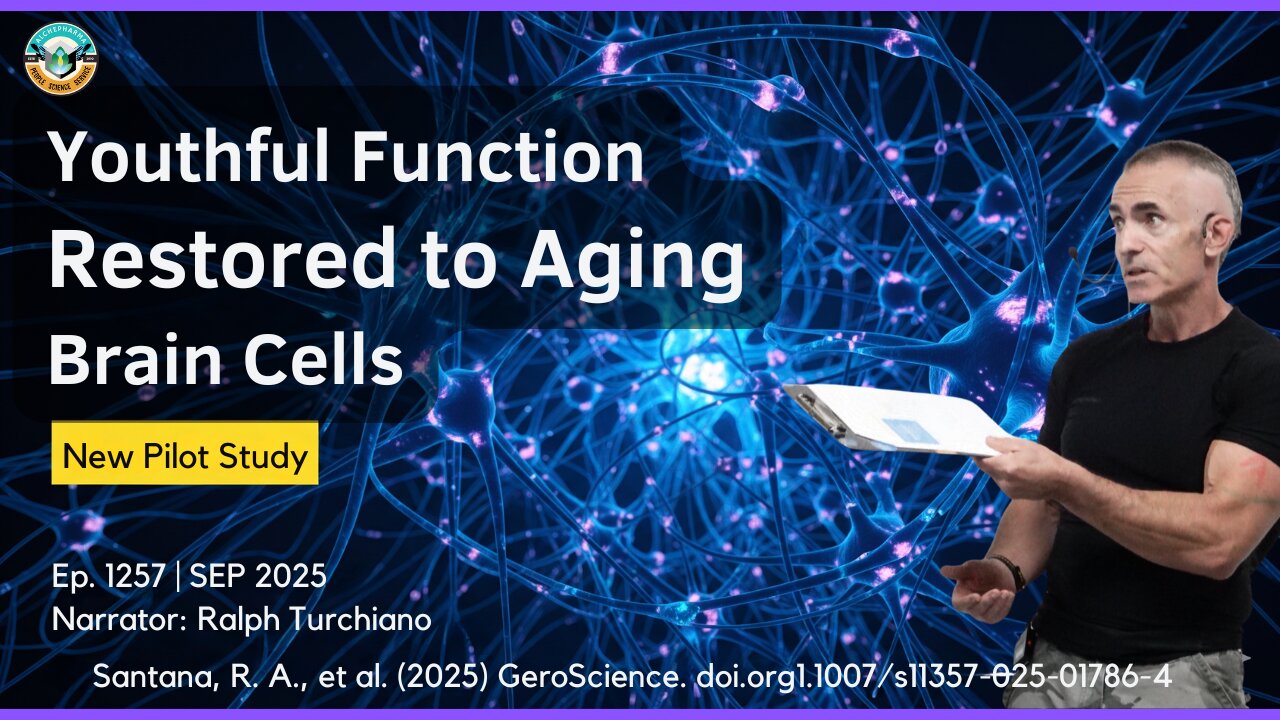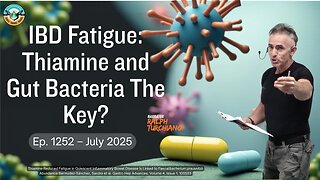Premium Only Content

Youthful Function Restored to Aging Brain Cells in New Study Ep. 1257 SEP 2025
A recent study in the journal GeroScience investigated how age-related declines in cellular energy, specifically the molecule Guanosine triphosphate (GTP), affect waste clearance in brain cells. Using hippocampal neurons from an Alzheimer's disease (AD) mouse model, researchers found a significant, age-dependent reduction in free GTP levels, which was accelerated in the AD model neurons. This energy deficit was shown to impair critical cellular processes like endocytosis and autophagy, leading to the accumulation of toxic amyloid-beta (Aß) aggregates and increased protein oxidation. Remarkably, the researchers then treated aged neurons for 24 hours with a combination of nicotinamide (a precursor to the energy-related molecule NAD+) and EGCG (a redox modulator found in green tea). This treatment was highly effective, restoring the depleted GTP levels in aged neurons all the way back to the normal, youthful levels seen in healthy, young neurons. This restoration of cellular energy enhanced the clearance of Aß aggregates and improved the viability of aged AD model neurons by 22%.
Disclaimers
• "This information is for educational purposes only and should not be interpreted as medical advice."
• "The study discussed was conducted in vitro on neurons isolated from mice. Further research is needed to confirm these findings in humans."
• "Always consult with a qualified healthcare professional before making any changes to your diet, supplement regimen, or treatment plan, especially if you have a medical condition or are taking medications."
• "This channel is not monetized and does not provide medical advice."
#GTP #Autophagy #AlzheimersResearch #Nicotinamide #EGCG
Source: Santana, R. A., McWhirt, J. M., & Brewer, G. J. (2025). Treatment of age-related decreases in GTP levels restores endocytosis and autophagy. GeroScience. https://doi.org/10.1007/s11357-025-01786-4
Guanosine triphosphate, GTP, Alzheimer's disease, neuronal aging, autophagy, endocytosis, bioenergetics, nicotinamide, EGCG, NAD+, Nrf2, 3xTg-AD mouse model, proteostasis, amyloid-beta clearance, Aß aggregates, mitochondrial dysfunction, cellular energy, redox state, Rab7, Arl8b, neuronal viability, protein oxidation, neurodegeneration, in vitro study, hippocampal neurons
-
 7:57
7:57
Nutrition Company
1 month ago $0.01 earnedThiamine for IBD Fatigue: Is Gut Bacteria the Key? Ep. 1252 July 2025
49 -
 1:03:06
1:03:06
Game On!
16 hours ago $3.15 earnedThe BIGGEST Plays From NFL Week 1!
19.1K4 -
 13:27
13:27
Clownfish TV
15 hours agoSydney Sweeney Backlash BACKFIRES! American Eagle Stock UP 38%! | Clownfish TV
42.7K11 -
 18:55
18:55
AndresRestart
16 hours ago $0.84 earnedSomething Key We Keep Missing About Metroid Prime 4 Beyond...
18.5K1 -
 8:06
8:06
China Uncensored
16 hours agoThis Could Be China’s LAST CHANCE To Save Its Economy
22.7K29 -
 LIVE
LIVE
The Bubba Army
2 days agoDocumentary Premiere, A HUGE SUCCESS! - Bubba the Love Sponge® Show | 9/08/25
1,369 watching -
 32:15
32:15
DeVory Darkins
10 hours ago $7.80 earnedDemocrats PAINFULLY WRECKED by Tom Homan as paid protesters ERUPT in Chicago
25.5K66 -
 16:59
16:59
Degenerate Jay
15 hours ago $2.92 earnedIs Metal Gear Solid Delta: Snake Eater Worth Buying?
44.4K2 -
 4:26:28
4:26:28
Flex011
7 hours ago $0.86 earnedCronos: The New Dawn – Brutal Time-Travel Horror Survival
17.3K2 -
 33:11
33:11
The Finance Hub
19 hours ago $2.55 earnedBREAKING: JD VANCE JUST RELEASED A MASSIVE BOMBSHELL!!! OMG!!
18K31